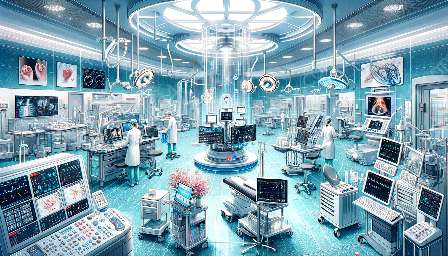Medical devices are crucial for patient care and treatment, and ensuring their proper maintenance and servicing is essential for the safety and efficacy of healthcare delivery. Clinical engineering plays a vital role in overseeing the maintenance and servicing of medical devices, ensuring that they meet regulatory standards and function optimally. This comprehensive guide explores the importance of maintenance, the role of clinical engineering, and best practices for servicing medical devices.
The Importance of Maintenance
Maintenance of medical devices is critical for several reasons. Firstly, regular maintenance ensures that the devices perform optimally and reliably, reducing the risk of malfunctions or failures that could compromise patient safety. Secondly, proper maintenance extends the lifespan of medical devices, maximizing their value for healthcare facilities. Additionally, maintenance activities can identify potential issues early, preventing costly repairs or replacements down the line.
Types of Medical Device Maintenance
There are several types of maintenance activities for medical devices, including preventive maintenance, corrective maintenance, and predictive maintenance. Preventive maintenance involves routine inspections, cleaning, and calibration to prevent potential failures. Corrective maintenance addresses issues that arise unexpectedly, such as component failures or malfunctions. Predictive maintenance utilizes data and analytics to anticipate failures and perform maintenance before issues occur, minimizing downtime and disruptions.
Role of Clinical Engineering
Clinical engineering is a specialized field that focuses on the management and maintenance of medical devices and healthcare technology. Clinical engineers are responsible for overseeing the lifecycle of medical devices, from acquisition to decommissioning. They play a crucial role in ensuring that medical devices meet regulatory requirements, are properly maintained, and contribute to the delivery of high-quality patient care.
Responsibilities of Clinical Engineers
The responsibilities of clinical engineers in the maintenance and servicing of medical devices include:
- Conducting regular inspections and maintenance activities
- Adhering to regulatory standards and guidelines
- Collaborating with healthcare professionals to assess equipment needs
- Participating in the selection and procurement of new devices
- Training healthcare staff on the proper use and maintenance of medical devices
Best Practices for Servicing Medical Devices
Adhering to best practices is essential to ensure the safe and effective servicing of medical devices. Some key best practices include:
- Developing comprehensive maintenance schedules and protocols for each type of device
- Implementing asset management systems to track the status and performance of devices
- Utilizing standardized procedures for maintenance and servicing
- Regularly updating and calibrating devices according to manufacturer recommendations
- Ensuring the availability of spare parts and resources for timely repairs
Regulatory Compliance
Compliance with regulatory standards is a core aspect of maintaining and servicing medical devices. Healthcare facilities must adhere to regulations set forth by organizations such as the Food and Drug Administration (FDA) and the International Organization for Standardization (ISO). Clinical engineers play a pivotal role in ensuring that medical devices meet these standards and undergo necessary inspections and certifications.
Conclusion
Effective maintenance and servicing of medical devices are fundamental to the delivery of safe and high-quality patient care. Clinical engineering professionals play a central role in managing and overseeing the maintenance of medical devices, ensuring that they meet regulatory standards and perform optimally. By implementing best practices and adhering to regulatory compliance, healthcare facilities can optimize the lifespan and performance of their medical devices, ultimately enhancing patient outcomes and safety.


